Story Pile: Robotech
It is challenging to know one of your favourite things is so aggressively mediocre.
This music, this opening, set the standard in my child mind for what epic truly represented. This opening that starts with a clearly damaged, recovered piece of footage, then switches constantly between different arcs of the story, showing characters who, at the start of the series aren’t even born. Three generations of a narrative collected in the opening, and in an 85-episode show, screened weekly if I got to catch all the episodes, some of these story beats were a literal year away.
Continue Reading →What Kind Of Sword Nonsense Did Bleach DO?
This here is a follow up to yesterday’s article about the fact that Bleach used swords as the fundamental metaphor for a bunch of characters. Want some examples? Well:
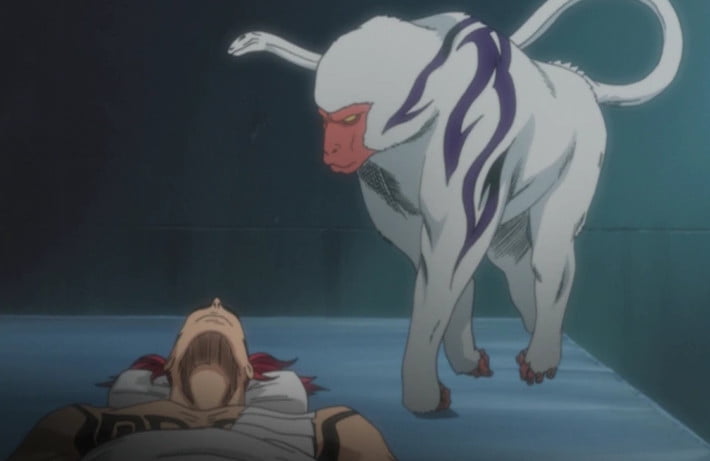
Who You Are In Bleach (It’s Always A Sword)
The Bleach respecter has logged on.
Okay, so basically there’s a thing in shounen anime how every one of them, more or less, has a thing that means ‘hey, here’s the reason people have a special ability.’ Whether it’s the Devil Fruit from One Piece, the Special Grade Curses from Jujutsu Kaisen, or the special Jutsu from Naruto. Kamen Rider Drivers, X-Men Mutations, Stands, Kwamis, they’re there to explain why Some People have the cool special powers and Some Other People don’t.
In Bleach, the ‘thing’ was a sword. The term for it is your Zanpakuto, but c’mon.
It’s a sword.
These swords aren’t just, you know, a sword, they’re a real sword (hhhnnnnnn I dunno) made out of your soul. It’s not a device with its own personality or traits, it’s something that was Inside Of You All Along (which I guess means Anthy Himemiya was a Soul Reaper?), and the way it works reflects something of who you are. There are three forms this sword can take (basically).
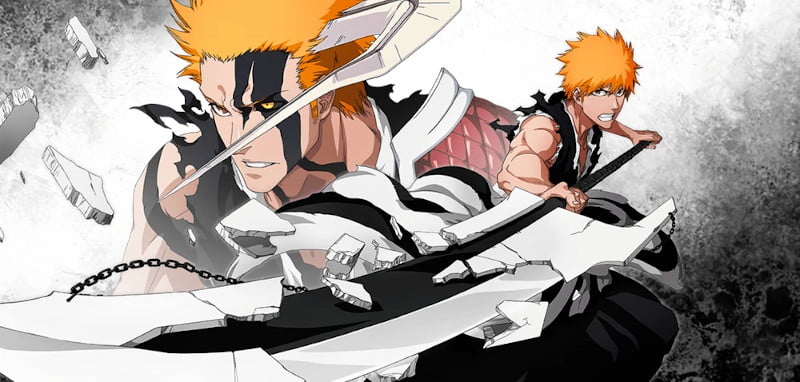
The Circumbendibus of Haruhi Suzumiya
Anime is an art movement that has encapsulated thousands of different competing threads and there’s no true centralising canon because it’s fragmented across all sorts of cultural anchor points. Australians of my age that are into anime so often got started because Aggro’s Cartoon Connection screened Sailor Moon, the ABC screened Astro Boy, Cheez TV screened Teknoman and SBS, in the late 90s, screened Neon Genesis Evangelion, meaning that those four anime are sometimes seen as ‘common ground’ topics. Common ground for one age bracket in one country, and even then, only sometimes.
There are some events that can be looked upon, in the english-speaking anime fandom, though, in terms of their impact on shared cultural spaces, typically conventions, but also just, anime releases that somehow managed to be widespread enough at the right time that they became foundation to the conversation. The big three of Naruto, Bleach and One Piece. Evangelion movies. Fullmetal Alchemist, then Fullmetal Alchemist again. A collection of trans girls and boys and nonbinary people that can trace a lineage from Ranma 1/2 through to Kampfer and Haku and Soul Eater and maybe a few tracing lines to Vandread.
There is a category of people I can annoy enormously by responding to a Touhou picture with which anime is this from?
There’s only so much room for any given series to suck up a lot of the oxygen in the fandom space. You can’t typically have five or six ‘big name’ anime that ‘everyone’ has an opinion on. One of those ‘event’ Anime, that rose, became incredibly prominent, and then deformed the culture at large, becoming one of the rings in the tree trunk that is this strange cultural enclaves, was the enormous franchise known as Haruhi Suzumiya.
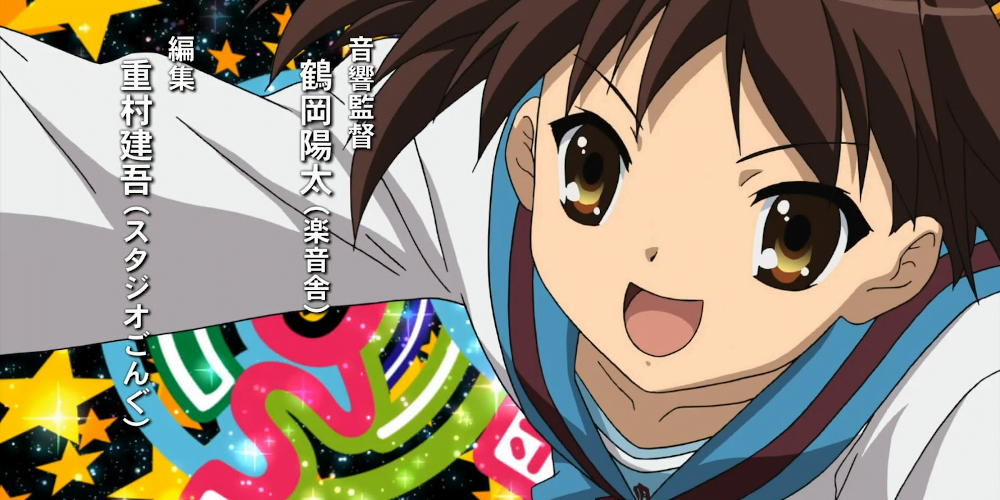
Story Pile: Ascendance of a Bookworm
It’s something of a meme that ‘light novel series’ is a subgenre of anime that throws up some warning signs. It shouldn’t – after all, two of my favourite anime of all time are both from light novels, but traditionally the field of light novels are known as being primarily harem or isekai anime, often being quickly produced to cash in on recognisable or marketable characters. Often these characters have some particular visual motif that makes them very recognisable and makes for good merch opportunities. Well, Ascendance of a Bookworm is an anime that started its life as a series of light novels, and it is an isekai, and it features a recognisable main character who has a lot of good merch opportunities.
It’s just that she’s also five.
The premise! Urano Mototsu, college nerd and bibliophile dies in a hilarious bookshelf-collapsing incident during an earthquake. Upon her death, she wakes up in a new body, in a fantasy kingdom, which should be considered rather rad, except Urano was not someone who lusted after adventure in fantasy kingdoms, she lusted after books which are pointedly absent in this fantasy kingdom, and her new body, Myne, is also five years old.
What you then follow is a sequence of narratives about a five year old girl personally trying to catapult herself up the tech tree in order to have access to books, even if she has to prompt industrial revolutions to do it.
The Calidity of Haruhi Suzumiya
Anime is an art movement that has encapsulated thousands of different competing threads and there’s no true centralising canon because it’s fragmented across all sorts of cultural anchor points. Australians of my age that are into anime so often got started because the ABC screened Astro Boy and Twins of Destiny, Cheez TV brought us Dragonball Z and SBS, in the late 90s, screened Neon Genesis Evangelion, meaning that those anime are sometimes seen as ‘common ground’ topics. Common ground for one age bracket in one country, and even then, only sometimes.
There are some events that can be looked upon, in the english-speaking anime fandom, though, in terms of their impact on shared cultural spaces, typically conventions, but also just, anime releases that somehow managed to be widespread enough at the right time that they became foundation to the conversation. The big three of Naruto, Bleach and One Piece. Evangelion movies. Fullmetal Alchemist, then Fullmetal Alchemist again. A collection of trans girls and boys and nonbinary people that can trace a lineage from Ranma 1/2 through to Kampfer and Haku and Soul Eater and maybe a few tracing lines to Vandread.
There is a category of people I can annoy enormously by sharing a Rozen Maiden picture with DESU DESU DESU DESU DESU DESU DESU DESU DESU DESU DESU DESU DESU DESU DESU etcetera.
There’s only so much room for any given series to suck up a lot of the oxygen in the fandom space. You can’t typically have five or six ‘big name’ anime that ‘everyone’ has an opinion on. One of those ‘event’ Anime, that rose, became incredibly prominent, and then deformed the culture at large, becoming one of the rings in the tree trunk that is this strange cultural enclaves, was the enormous franchise known as Haruhi Suzumiya.
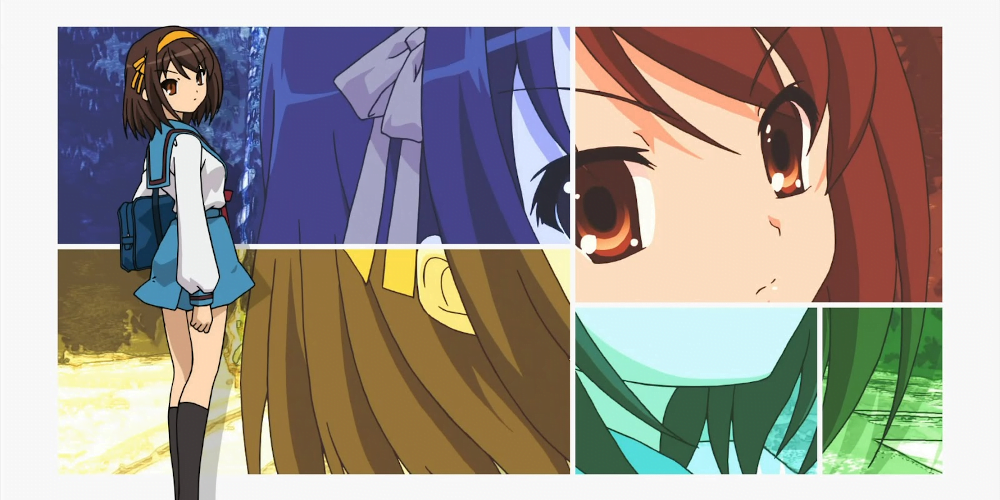
How To Be: Ukyou Kuonji (In 4E D&D)
In How To Be we’re going to look at a variety of characters from Not D&D and conceptualise how you might go about making a version of that character in the form of D&D that matters on this blog, D&D 4th Edition. Our guidelines are as follows:
- This is going to be a brief rundown of ways to make a character that ‘feels’ like the source character
- This isn’t meant to be comprehensive or authoritive but as a creative exercise
- While not every character can work immediately out of the box, the aim is to make sure they have a character ‘feel’ as soon as possible
- The character has to have the ‘feeling’ of the character by at least midway through Heroic
When building characters in 4th Edition it’s worth remembering that there are a lot of different ways to do the same basic thing. This isn’t going to be comprehensive, or even particularly fleshed out, and instead give you some places to start when you want to make something.
Another thing to remember is that 4e characters tend to be more about collected interactions of groups of things – it’s not that you get a build with specific rules about what you have to take, and when, and why, like you’re lockpicking your way through a design in the hopes of getting an overlap eventually. Character building is about packages, not programs, and we’ll talk about some packages and reference them going forwards.
Well, we’ve done some odd stuff with this section, some big ideas about maximising specific character quirks and hitting particularly niche interests like a transforming robot dinosaur, but what if your wants are more hey, what can I do with this simple basis? And, it seems that this month is full of references to Ranma 1/2 and twitter voted on it, and so, here we go, a return to Ranma 1/2 as an option: Ukyou Kuonji.
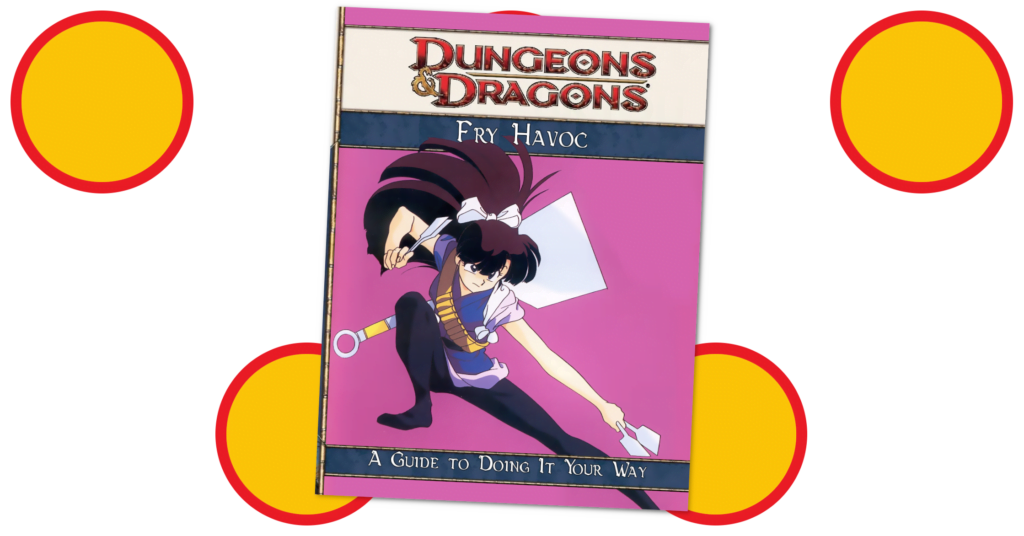
Story Pile: The Quintessential Quintuplets, Season 1
It wasn’t intentional by any measure but it turns out, to my surprise, that I became a fan of anime through the introductory template of the Harem Anime. For me, it was, in my early anime watching days, just a natural part of how anime worked where you’d have a character, then four or five people who really wanted to jump them. It was literally something that I think of as foundational to anime, because I mean, I watched Ranma 1/2 and then Tenchi Muyo and at that point that was my lens for how I thought the whole genre worked, and therefore I assumed that say, Sailor Moon must have harem stuff over there where I wasn’t watching in the episodes I missed. As a result, I watched a lot of harem anime, and it took me a long time to realise that the dynamics of a harem anime weren’t universal. Like, I didn’t realise that you weren’t ‘supposed’ to ship every Slayers character with Lina Inverse and I was equally surprised when there was a definite end to the relationship tangle in Ranma 1/2.
This genre tends to boil down to one [TARGET AUDIENCE GENDER] with a set of [THREE OR MORE] [TARGET AUDIENCE INTEREST GENDER WITH SPECIFIC DETAIL]s that want to [COMICAL INNUENDO INVOLVING RIDICULOUS WORD]. The template is that simple, but harem anime in particular have a few complications that come from what’s not common to them. Specifically, if you have three characters who can’t choose between one another, then all you’re looking at is a love triangle and those are kinda easier to resolve and much more about a small number of characters who relate to one another. A harem anime is instead about watching one character as they interact with a group of other characters, and ideally, it has something else going on like a sci fi story or an adventure or a fight tournament or just goddamn anything that isn’t just ‘which characters will get it in the end’ or it tends to get boring. They also tend to mix in some gimmick with the girls, either to add interest to the narrative or to sound the sirens about the author’s personal fetish.
With that said, welcome to Quintessential Quintuplets, an anime about one dude with a set of five hot girls with giant racks that want to ride his baloney pony. And you know the twist of this one?
They’re all related!
Wait, no, hold on, this is good, please, put down the broom!
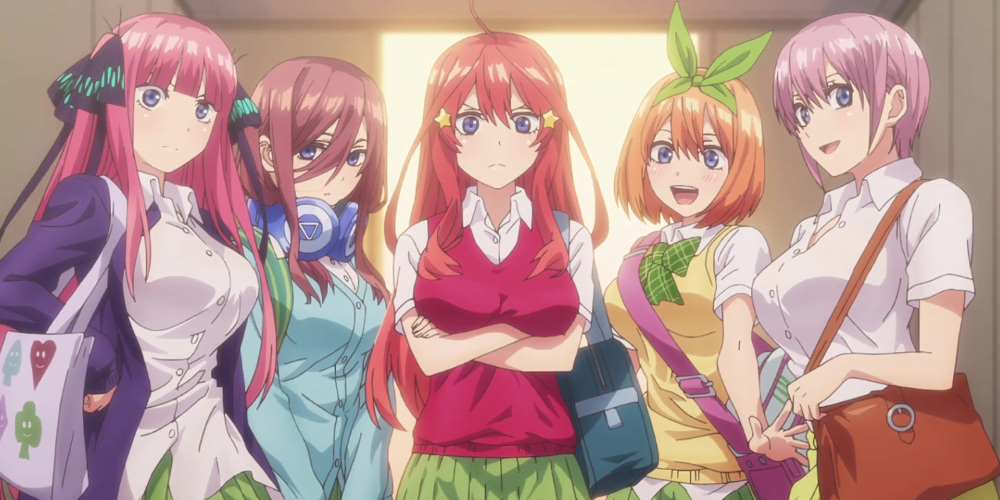
Akane Tendo, Baudrillard’s Tsundere
There’s this idea I’ve talked about before, when I wrote about Ouran High School Hosts Club of The Simulacrum. The simulacrum is an idea covered under the concept of hyperreality. You don’t need to read that, but I want to use it as a place to start as we talk about something of a Smooch Month classic.
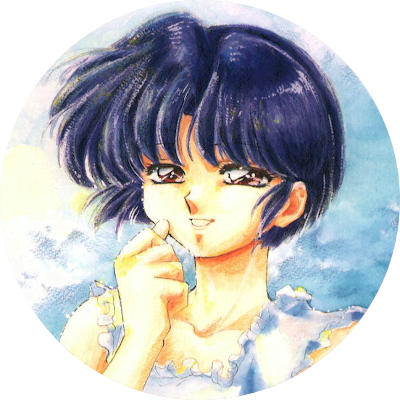
Who’s this?
Chances are if you’re a weeb my age, you’ll remember her as Akane Tendo.
And chances are good, you know her, and don’t know her. Not the real her, and there is a real her.
Continue Reading →Story Pile: Monthly Girls’ Nozaki-kun
You know it kinda amuses me how much I rubbish on webcomics when I keep doing story pile articles on webcomics that are either just good on their own, or that gave rise to other products I think are really good.
Monthly Girls’ Nozaki-Kun is a 12 episode (and some OAVs) anime based on a gag-a-day 4koma webcomic of the same name. The premise is a high school girl named Chiyo Sakura confesses to her crush, and thanks to a reasonable (?) misunderstanding, he thinks she means she’s a fan of his work.
Because he has work.
Because he’s a successful and renowned manga-ka who makes a girly shojo manga, and what ensues is Chiyo falling down into the gravity well that is Nozaki’s social space and the near constant commentary on how weird he is as a person, how weird his assistants are, and importantly, how weird Chiyo is by how all of these elements of the behaviour and personality of actual manga-ka are in some way, natural to her.
Story Pile: Haikyuu!!
What? Wait a minute! This isn’t smooch material! This isn’t smooch material at all! What gives, Talen?
Come with me on this journey.
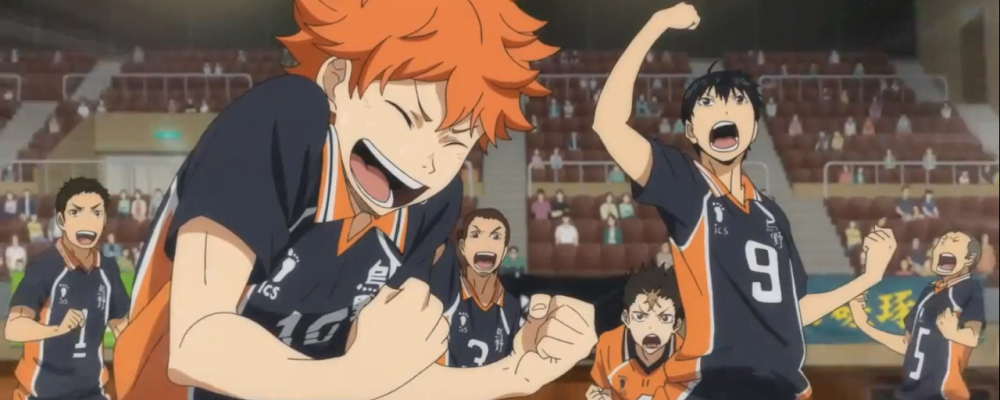
Bleach: Tatsuhime
I don’t know if I’ve ever said it in so many words, but Bleach is a mess.
Hang on, I wrote about it on this blog, I can go back and check.
When you don’t have a sort of concluding paragraph, when you don’t have a point you were building to, though, there’s a certain freedom to it. I don’t think Tite really had a plan and if he did it didn’t matter because the author of Bleach, in a proper Barthes way, is dead, and that author had no idea where they were going.
Okay, so I did say something like that.
Bleach being a mess is part of why Bleach fandom is much like Star Trek fandom, a process of deciding what parts of it you’re willing to, or interested in keeping, and then just letting the rest sit over in a pile that gently steams. It is a sweater made almost entirely of dropped threads.
Let me tell you about the most inexplicably dropped thread, the ship known as Dragon Princess: Orihime/Tatsuki.
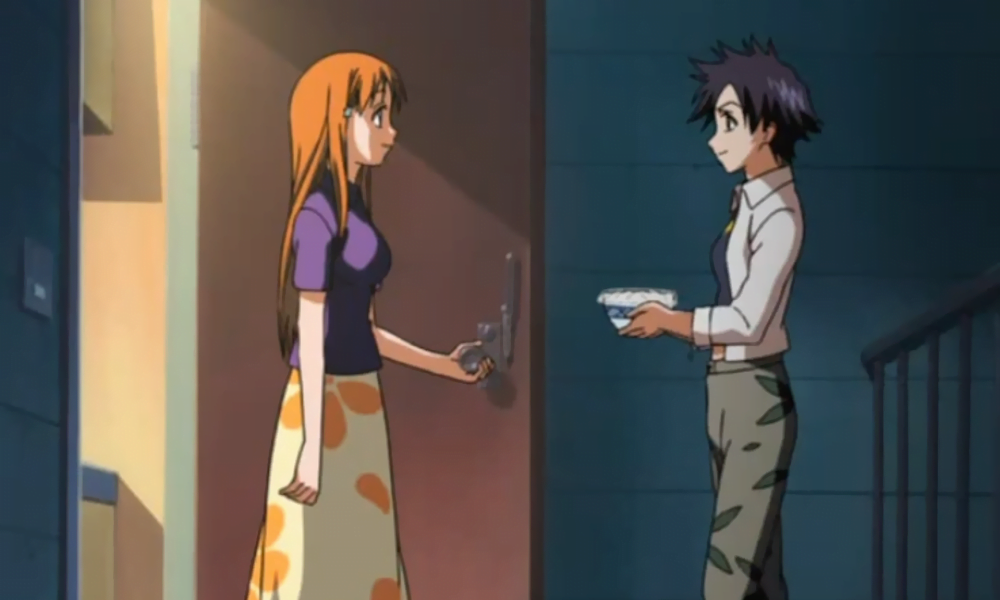
In Praise of the Yandere
Content warning! I talk about mental health stuff in a general way and there’s some talk of relationship violence and abusive behaviour. You should bounce if you’re not here for that.
In the parlance primarily of anime culture, but also its related spaces, there is the idea of romantic character archetypes. I’ve talked about this in the past, about the idea that having common language to describe media archetypes serves to make conversations about media (and everything else) easier, and genre media, as this under-examined place full of shorthand and signifiers, is no different. When you have terms for archetypes, it’s easy to identify them, bring them together, talk about them, and compare them. Then we can talk about these characters as a category, and that’s interesting and cool.
I think the one that’s most widely known, outside of weeb space, is the tsundere, the idea of a girl who alternates between being very angry and very loving. But, if you’re paying attention to gamer spaces, you probably have heard of the other big archetype, The Yandere.

The Collapse of Haruhi Suzumiya
Anime is an art movement that has encapsulated thousands of different competing threads and there’s no true centralising canon because it’s fragmented across all sorts of cultural anchor points. Australians of my age that are into anime so often got started because Aggro’s Cartoon Connection screened Sailor Moon, the ABC screened Twins of Destiny and Amazing Cities of Gold, and SBS, in the late 90s, screened Neon Genesis Evangelion, meaning that those four anime are sometimes seen as ‘common ground’ topics. Common ground for one age bracket in one country, and even then, only sometimes.
There are some events that can be looked upon, in the english-speaking anime fandom, though, in terms of their impact on shared cultural spaces, typically conventions, but also just, anime releases that somehow managed to be widespread enough at the right time that they became foundation to the conversation. The big three of Naruto, Bleach and One Piece. Evangelion movies. Fullmetal Alchemist, then Fullmetal Alchemist again. A collection of trans girls and boys and nonbinary people that can trace a lineage from Ranma 1/2.
There is a category of people I can annoy enormously by responding to a Touhou picture with which anime is this from?
There’s only so much room for any given series to suck up a lot of the oxygen in the fandom space. You can’t typically have five or six ‘big name’ anime that ‘everyone’ has an opinion on. One of those ‘event’ Anime, that rose, became incredibly prominent, and then deformed the culture at large, becoming one of the rings in the tree trunk that is this strange cultural enclaves, was the franchise known as Haruhi Suzumiya.

Story Pile: Princess Mononoke
I want to forward to you that Princess Mononoke is this year’s perfect Christmas movie.
Continue Reading →How To Be: The Castlevania Gang (In 4e D&D)
In How To Be we’re going to look at a variety of characters from Not D&D and conceptualise how you might go about making a version of that character in the form of D&D that matters on this blog, D&D 4th Edition. Our guidelines are as follows:
- This is going to be a brief rundown of ways to make a character that ‘feels’ like the source character
- This isn’t meant to be comprehensive or authoritative but as a creative exercise
- While not every character can work immediately out of the box, the aim is to make sure they have a character ‘feel’ as soon as possible
- The character has to have the ‘feeling’ of the character by at least midway through Heroic
When building characters in 4th Edition it’s worth remembering that there are a lot of different ways to do the same basic thing. This isn’t going to be comprehensive, or even particularly fleshed out, and instead give you some places to start when you want to make something.
Another thing to remember is that 4e characters tend to be more about collected interactions of groups of things – it’s not that you get a build with specific rules about what you have to take, and when, and why, like you’re lockpicking your way through a design in the hopes of getting an overlap eventually. Character building is about packages, not programs, and we’ll talk about some packages and reference them going forwards.
Alright, let’s look at these three.
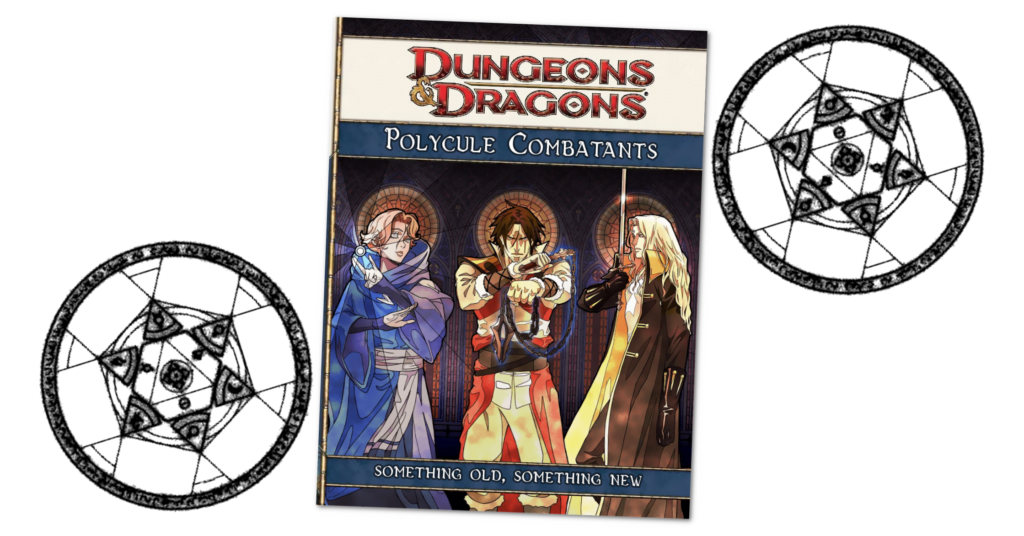
Game Pile: Ai: The Somnium Files
This text is here to try and keep Jetpack from just linking straight to the video.
How To Be: Tier Halibel (In 4e D&D)
In How To Be we’re going to look at a variety of characters from Not D&D and conceptualise how you might go about making a version of that character in the form of D&D that matters on this blog, D&D 4th Edition. Our guidelines are as follows:
- This is going to be a brief rundown of ways to make a character that ‘feels’ like the source character
- This isn’t meant to be comprehensive or authoritive but as a creative exercise
- While not every character can work immediately out of the box, the aim is to make sure they have a character ‘feel’ as soon as possible
- The character has to have the ‘feeling’ of the character by at least midway through Heroic
When building characters in 4th Edition it’s worth remembering that there are a lot of different ways to do the same basic thing. This isn’t going to be comprehensive, or even particularly fleshed out, and instead give you some places to start when you want to make something.
Another thing to remember is that 4e characters tend to be more about collected interactions of groups of things – it’s not that you get a build with specific rules about what you have to take, and when, and why, like you’re lockpicking your way through a design in the hopes of getting an overlap eventually. Character building is about packages, not programs, and we’ll talk about some packages and reference them going forwards.
This month, we’re going to dive into the world of the dead and look to the Queen of Hueco Mundo by the most powerful shounen anime right, the right of default, the underboob to Matsumoto’s cleavage well, Tier Harribel.

BDG’s Commedia Del Anime Chart
Hey, did you like this video?
I liked it. I liked it and it gave me a list that was useful as a way to consider collections of characters (like roleplaying characters, or the cast of a book you’re working on), and that seemed a fun thing to play with. Problem is, the complicated system that BDG outlined here isn’t presented with something like a spreadsheet to copy and fill in on your own.
Sooo
I did that.
Here’s a link to a viewable chart, which you can Make a Copy of and fill in with your own characters. Have fun!
Five More Bleach Songs That Were At The Start Of Episodes
I’ve said Tite Kubo is an artist who expertly renders a few seconds at a time. It means that when you ask him to try and create a splash page you’re going to get characters full of personality and aesthetic expression and maybe you’ll even get a vague hint of how those characters are strange to one another.
Ask him to resolve a plot and you’re going to get something that feels it got punched out of a template. And honestly, good. I don’t think he should have to try and pull of what he can’t do.
Know where this guy’s abilities excel?
They excel in media forms where you can depict maybe a split second of motion, a sense of character without necessary dialogue and maybe a single phrase or background image. Bleach is an entire anime universe constructed for AMVs, and you can tell, because of the opening and endings that already basically are.

I’ve already spoken about Shojo S, Asterisk, Alones, and Houki Boushi last time I did this, but the good news is that Bleach had forty five openings and endings, split unevently between either, so it’s not like I’m running out of material for this any time soon. I did do a stupid thing by mentioning Houki Boushi first because that ending kills and there are also thirteen versions of the ending, and if I put together a list of ‘all of the Bleach songs in order of best to worst’ Houki Boshi would fill an embarassingly high number of the top twenty.
Here then are another five.
5. D-tecnoLife
If you ever needed another testament to the complete cluelessness of this series, of the not knowing anything at all about what it was going to be, but being very sure about the methodologies of the story, behold the second opening. The song here is about being sad and tormented, but refusing to give up. It kind of frames the story it’s showing you as about a quest to go rescue Rukia as you fell into this world of strange and extremely cool characters who you are at odds with (but look how hot they are except the big fat one and weird puppet dude).
What we see is a montage of characters who are of varying importance to the plot overall (I mean, hi Chad, sorry Chad, hi Ganju, goodbye forever Ganju, jesus christ), but it still introduced you to a large chunk of the Gotei 13 characters that you wanted to know about. It didn’t do much to tell you about who they really were, but you did get some hints – like the way the opening shows you Hitsugaya dealing with being under Generic Attack from Ishida before trying to kill you, the viewer. I liked the way it showed a connection between Soi Fon and Yoruichi, with Soi Fon just trying to take Chad’s head off and Yoruichi wrecking her by taking the tip of her sword.
Which.
When you remember that sword is Soi Fon’s soul
And
You know what, let’s move on.
4. Tonight, Tonight, Tonight
A filler arc would normally be a perfect place to drop a mediocre opening, and you can sort of notice the way this opening saves its budget by using reused footage, still images, slow pans, empty spectacle, and an annoying focus on the god damn puppets. It also shows off a collection of Bounts, which are like slightly paper-jammed photocopies of designs you’ve kind of seen before elsewhere in the series.
This opening also has the bumper framing of Rukia jolting Ichigo into motion and then being his point of rest, at a picnic, together, where they fall asleep, because they are Good Friends, and Not Romantic Partners.
Man this series had no clue where it was trying to go.
Still, this is kind of how I feel like Anime Openings want to be, with this sort of smash-cut sequences of one or two actual things that happen in this story that are important to the story, and a chunk of character expression in a few short heartbeats. What really sets it apart is this song, by the Beat Crusaders fucking rules.
Apparently Phil Collins covered it at some point? Weird.
3. Rolling Star
The story is still in filler space, and that kind of shows in the way this opening shows you all the top-polling characters and almost nothing of the enemies this story is about dealing with – they’re represented just by bleak shadows and shimmering shapes. There’s some hint of Gin (remember Gin?), Aizen, and Hollow Ichigo, but make no mistake, this opening was rolled out while theywere still in the filler turf of the Bount arc. The opening is a sort of ‘hey, remember the cool stuff?’ that you could use in a filler spot to get people to look forward to the thing you’re definitely not giving them yet.
It does mean you get a sort of platonic ideal of Bleach at this point; cool characters in casual gear, looking great (I mean, how cool is Hitsugaya’s outfit here), and lots of symbolism and imagery that absolutely does not and will not happen as suggested, but crucially, which kinda feels like it would.
That’s the thing that honestly feels like the biggest cheat: The story presented in this opening is a story I want to see more of, and we don’t even get that.
Complicating this further is that the song is excellent, a sort of ascending punch to Houki Boshi‘s crashing descent.
2. Velonica
Mmm, can you taste that declining budget?
This opening is composed of a large number of still shots and the animation is stuff like dramatic fluttering of robes, which is one of the easiest kinds of animations to do. You don’t have to track the movement of the objects, you don’t have to be sure that they make sense in a single shot, because what matters is that they look about right in aggregate. There’s a lot to forgive in reusing frames, too!
The opening is also a testament to how this series just has no earthly clue about what, in it, is going to be important. It does spare a moment to give you a massive shot of Nemu’s thigh, which is something, I suppose, but there’s this direct flow from Unohana into Kenpachi – and imagine if you’d known ahead of time that those characters had literally anything to do with one another.
The song kicks ass, which is why it’s in this list, but it’s a symptom of how this show has no idea of where it’s going or what matters. There’s a suite of characters presented at the end, who, by the way, rule, and their character designs are great, expressed in that single last moment, but that’s all you get. More time is spent focusing on Ginryusai’s bloody eyebrows.
1. chAngE
First of all, I think this song rules, I like it a lot.
I also think that this opening is a sign of just how utterly far Bleach has come from having the faintest clue about what it was going to be about or where the story was going, and this came with the knowledge there were two more plot arcs and seventy episodes remaining for the show.
The opening is full of these wonderful signs of stylistically rendered completely confusing nothing. Why are we seeing Ichigo flying in a trenchcoat against a sky of crows? Why are we seeing it in these long paced out sections? Why did Orihime say change?
By the way, this is one of those things Bleach does to its immense detriment: Orihime and Rukia both get Kairi’d real hard. They’re characters with nothing to do but to sit still and be emperilled so the plot can advance up to them, and that’s it, it doesn’t change the nature of what’s going to happen when the rest of the heroes get there. Also, note that because Orihime was the one being Kairi’d most recently at the end of the story, she’s the one who wound up ‘winning’ Ichigo, despite having three other potential love interests, two of whom were women. You’ve heard of ‘First Girl Wins?’ This is the sadder defaulting finale of that, a sort of musical chairs of Wrap It Up when the budget runs out.
Then, you get a glimpse of what’s going to happen next: Ulquiorra and Ichigo are going to fight and Ulqiorra’s going to look awesome. And
that’s all this vision of the future can give you.
The Vizard are in this! They look cool! They have cool masks and personality! Just show us them flipping out!
Compare this to the opening of the Soul Society arc; you got glimpses of characters, there was action, they were shown interacting, there were hints of who they would be even if the anime wasn’t sure. Characters were shown expressing the way they would be in potential spaces. Song’s great, no lies, but it’s an example of how Bleach wound up being: Impressively crafted, clueless nothing.
How To Be: Sumireko Usami (In 4e D&D)
In How To Be we’re going to look at a variety of characters from Not D&D and conceptualise how you might go about making a version of that character in the form of D&D that matters on this blog, D&D 4th Edition. Our guidelines are as follows:
- This is going to be a brief rundown of ways to make a character that ‘feels’ like the source character
- This isn’t meant to be comprehensive or authoritive but as a creative exercise
- While not every character can work immediately out of the box, the aim is to make sure they have a character ‘feel’ as soon as possible
- The character has to have the ‘feeling’ of the character by at least midway through Heroic
When building characters in 4th Edition it’s worth remembering that there are a lot of different ways to do the same basic thing. This isn’t going to be comprehensive, or even particularly fleshed out, and instead give you some places to start when you want to make something.
Another thing to remember is that 4e characters tend to be more about collected interactions of groups of things – it’s not that you get a build with specific rules about what you have to take, and when, and why, like you’re lockpicking your way through a design in the hopes of getting an overlap eventually. Character building is about packages, not programs, and we’ll talk about some packages and reference them going forwards.
This month, we’re going to become a god damned Touhou.
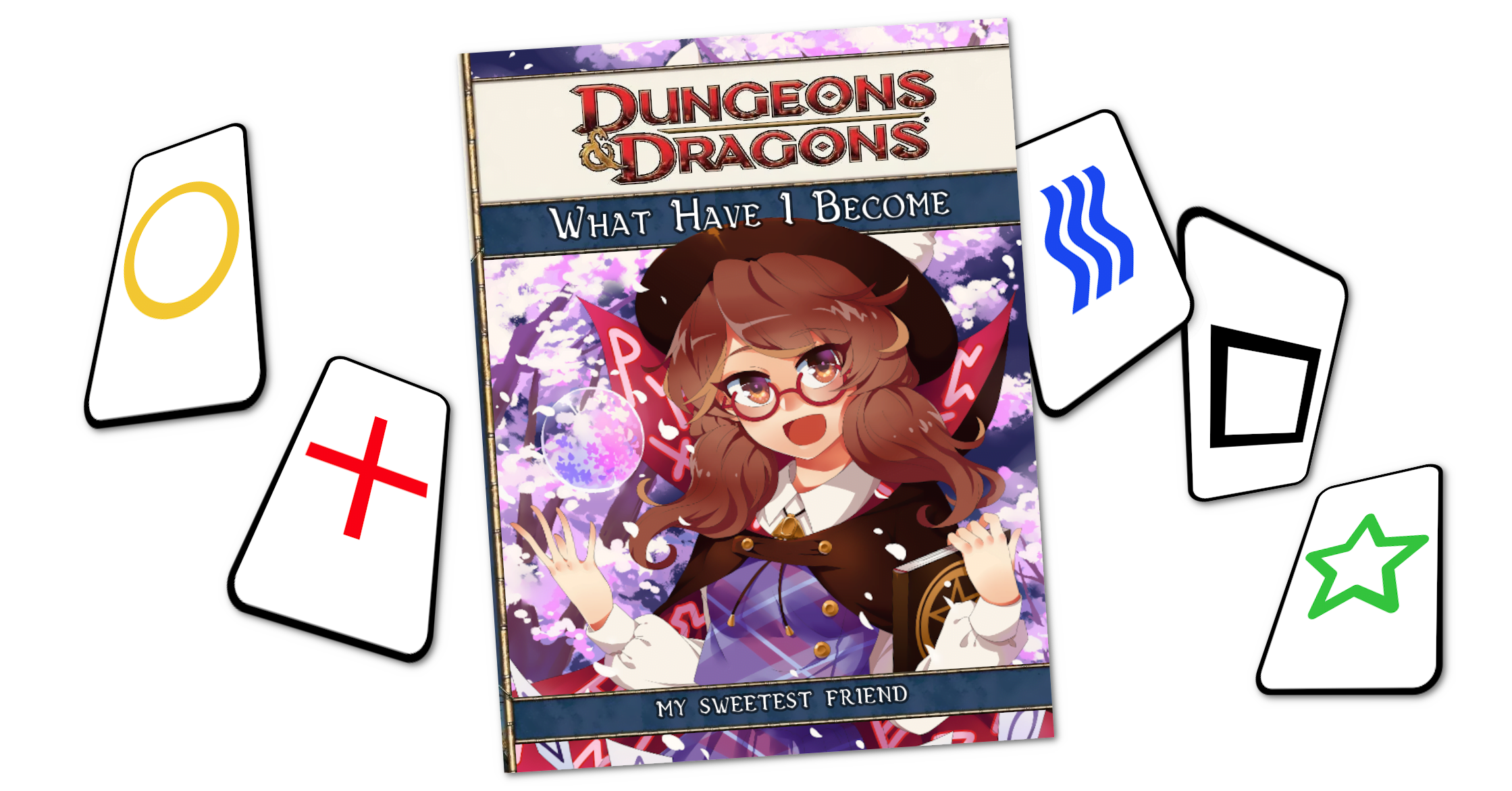
Story Pile: Fullmetal Alchemist The Live Action Movie
Once the media juggernaut that was the Fullmetal Alchemist story had smashed in place a bestselling manga then created not one, but two best-selling internationally successful anime, not to mention a bunch of tie-in videogames, merchandising out the wazoo, it resolved that it was time to release a live action movie. The movie was originally developed for 2013, but was held up, citing reasons of technology and budget, not made and released until 2017.
And the movie, my friends, is bad.
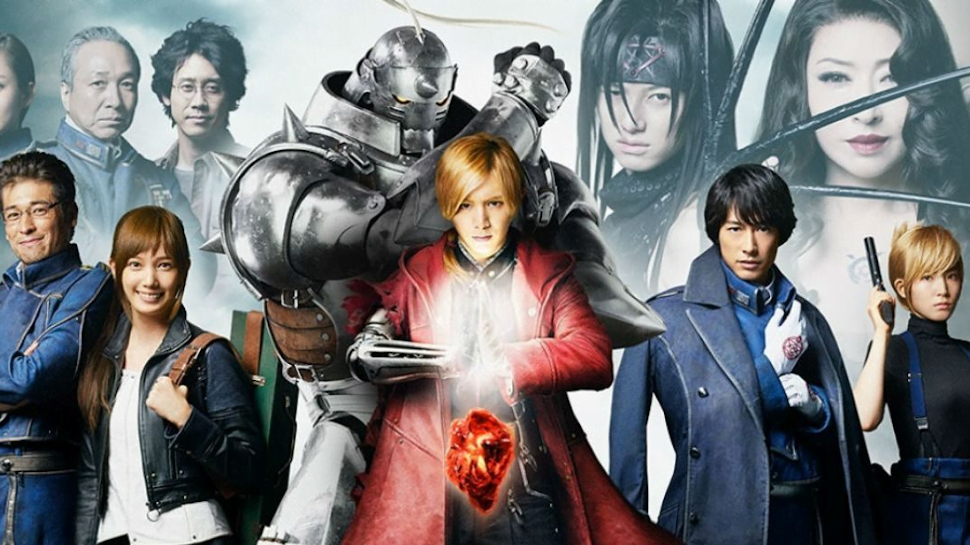
Story Pile: Fullmetal Alchemist Brotherhood
And then like the krispy kreme, we’re back at it again.
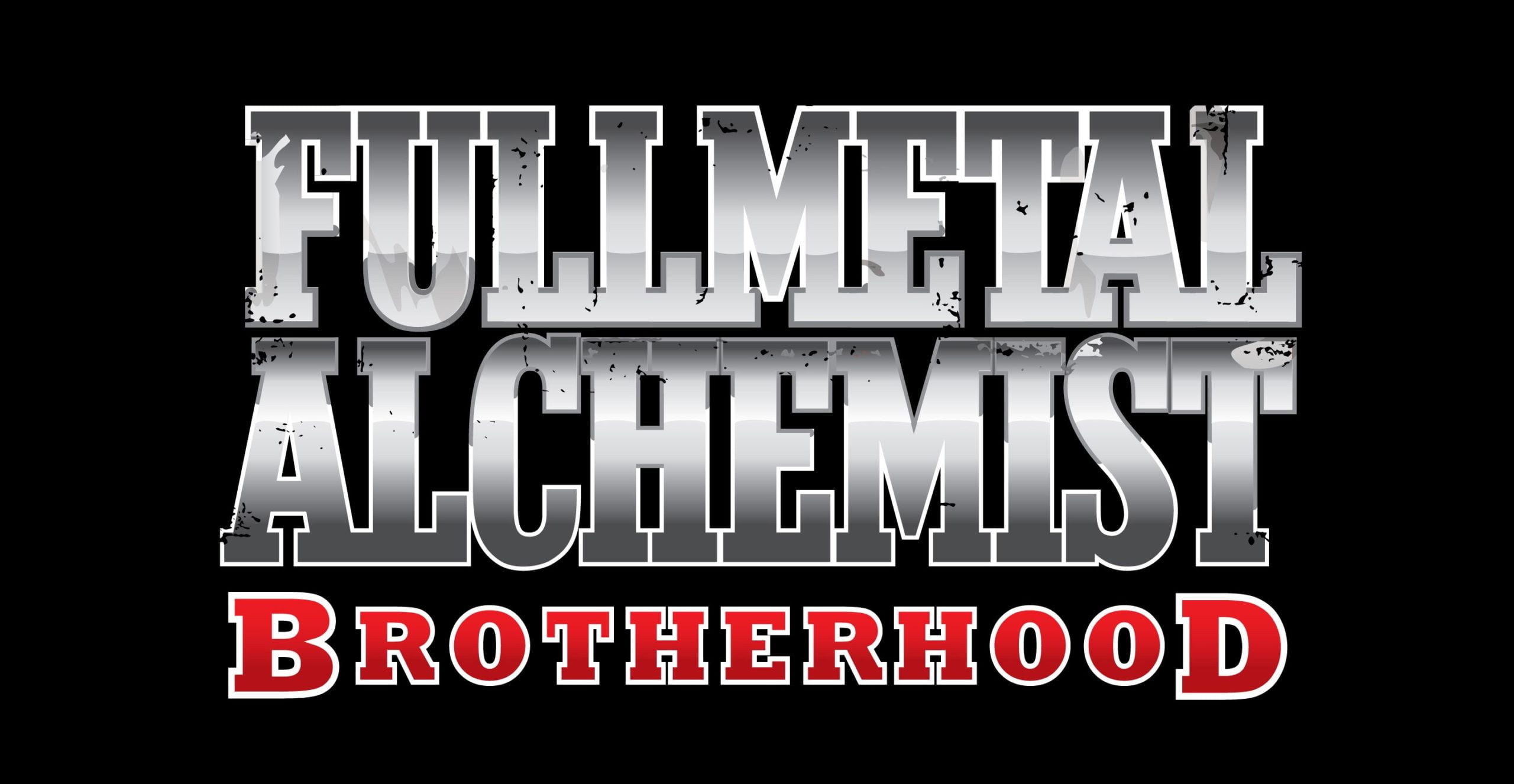
It’s very hard to deal with contrary impulses and present a fair position without being coloured by the arguments you had on the way to get somewhere, or by the arguments you’re anticipating. For example, while I may say straight up that Fullmetal Alchemist: Brotherhood is probably the best anime of its type that exists (mage-punk, long-running action-adventure character driven stories with themes of war and loss), there’s still the hanging asterisk that I was also pretty positive about Fullmetal Alchemist, and how much can someone trust my opinion on this one? And what’s more, how can I praise that anime and yet have qualified praise for this one, because that was a Bad Anime and this is a Good Anime?
Anime fandom is a mistake.
Anyway, the coda: I think that Brotherhood is one of the best anime of its type, and yet, I think that has flaws that merit critical attention; I think that it’s worse because of the 2003 anime, and I think that anime is treated worse for not being this.
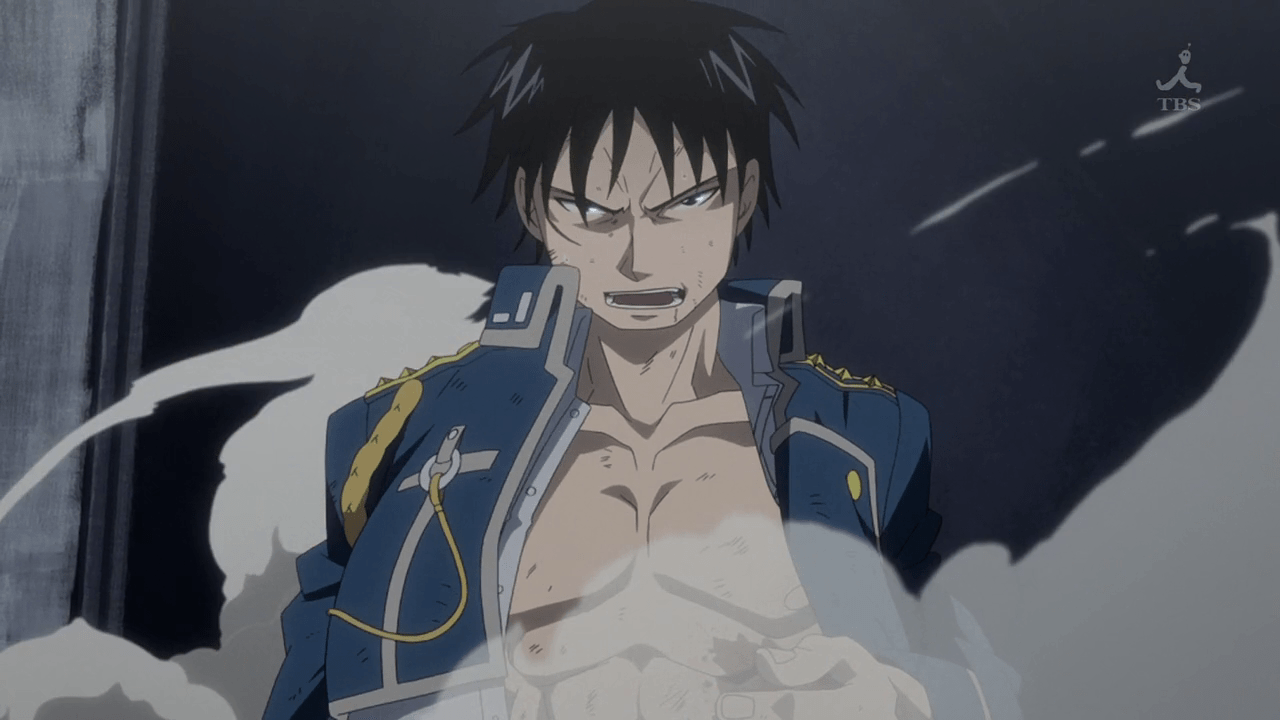
Story Pile: Fullmetal Alchemist – The Anime
In 2003, the then-ongoing Fullmetal Alchemist manga launched a new anime, which took the series’ adventure story and complicated scientific-based material magical power system reinforced through firm, rigidly defined character interaction, and made it into an affair of visual spectacle. This was a good decision because all the pieces were in place to make a great action adventure anime, with a dash of horror, with the promise of riding the popularity of the manga readers that were following eagerly along with the manga.

.
Now, conventionally, and certainly back in them nineteen hundred nineties, when an anime is made out of an ongoing manga there’s a bit of a logistical problem that seemingly everyone knows is there and it’s coming but most people involved don’t seem to think it matters. You may also know this as the Game of Thrones problem where a show is being made to follow another serialisation that is moving slower than the original. With the right kind of head start, sometimes the manga and anime can come together and land the same ending at the same time, but it rarely works out that way.
Continue Reading →Story Pile: Fullmetal Alchemist – The Manga
There are a certain number of pieces of media that I don’t tend to want to talk about.
Sometimes, I don’t want to talk about a piece of media because I’ve never seen it, and in order to comment on it, I’d have to seek it out, and I don’t imagine I’ll be bringing anything new or interesting to the table. I’m a white cis guy, and lots of white cis guys who are straighter than me have worked very, very hard to make sure that if you get a ‘standard take’ on anything, you’re getting it from some variety of white cis guy. Watching The Room so I can say ‘yes, this sure is just as bad as I expected’ is not, to me, a valuable use of your time or mine. If I’m going to hatewatch something it’s because I know there’s something in there, some perspective I can bring to bear that’s interesting.
There’s also stuff I don’t talk about because I’ve been specifically asked not to talk about it. That is, stuff that I am known as being negative or critical about, and where sensitive people have asked, fairly nicely, for me to leave them alone as topics.
There are still works I don’t talk about, though, because they’re so good and them being good is so well known, I’m not going to tell you anything new by doing it. I don’t think, really, there’s a single thing I can tell you about Avatar: The Last Airbender that isn’t already done better by someone else, I don’t think that I’m going to provide a single extra angle on Inception, and even if I did have something to say (‘it’s fine,’ at best), I don’t find my opinion interesting.
The idea that my opinions are inherently interesting is the plague of privilege that I absolutely do not want to be comfortable.
Why then, would I talk about Fullmetal Alchemist?
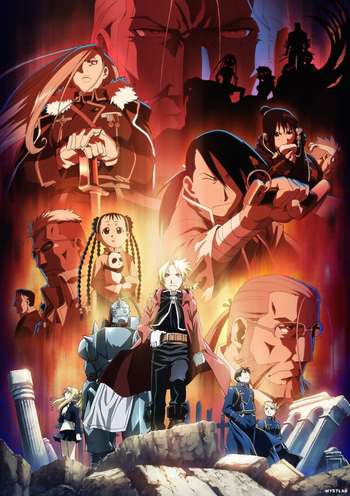
The Mysterious Fogs Of Amerimanga
There’s this term that you see sometimes used by digital archivists, called bit rot. It’s this phenomenon where electromagnetically stored media, despite being ostensibly ‘permanent’slowly accumulates non-critical errors in the storage media, meaning that you get these special kinds of errors, which can often result in this eerie kind of work where the structure of what how computers save and store information is different enough to ours that we see things that look really wrong but in a really interestingly recognisable way. Bit rot doesn’t tend to show you media that’s completely alien, just that what it prioritises looks really weird. Sometimes it’s a simple as half a picture being A Bit Green. Sometimes it’s all the colours becoming neon and bright while still keeping as much of the shadows that preserve the image.
Bit rot is not just limited to the data stored on electronic media, though. The internet has its own form of bit rot. Any given site you visit on the internet isn’t necessarily talking to one computer hosting one website. It’s going through a vast network of interconnected components. Websites reference one another, in some cases hosting images on one another, and when you start digging into the old web, you start getting weird errors that, again, are about the way computers preserve things in a way that you wouldn’t expect, because computers aren’t people. The internet, originally conceived as, in part, an indestructible archive of the sum of human knowledge, therefore, has the eerie phenomenon of human archivists who do their best to try and manually ensure the internet is preserved in ways that won’t break over time.
Thus it is for someone who grew up knowing about Crosswinds and AngelFire and Geocities and the like, and came of age during that period where the webcomic boom coupled with the first arrival of the manga market in the west resulted in lots of stuff getting platforms with a lot of things that were normally gatekept away. There was a demand for people to make webcomics and manga and well, that meant lots of stuff got put out there, got a viewing and then… at some point, stopped. And then, with the internet moving on and various platforms taking over, that means those old sources have bit-rotted away.
I bring this up to explain how it is possible that I have this strangely resonant familiarity with the category of media I jokingly call ‘Amerimanga’ without being able to name a single real actual example. I went looking, I really did. I tried to find it – remembering character names like Colvin and Kyle, and transition that was enabled by such wild things as haunted videogame cartridges and the fact someone started reading fanfic about themselves or in one cases, a duck.
The genre is pretty simple: I describe it with an image, usually of some unrelated, or generic non-anime anime source, and then use the title of the thing to describe a very specific plot that has in some way gone off the rails from an existing, ‘legitimate’ framing to instead be about the main character being a girl, and being very in to that.
What happened then was that in this weird little space of webcomics-and-non-manga manga, where often comics weren’t really being overseen and all that could get you driving on to keep going was an audience response, was a lot of people were making the stories they could best throw out, week to week or issue to issue, in some sort of vague, semi-professional, almost-a-failure but-probably-not way. This isn’t to talk ill of this space: Odds are good, it’s just like any other existing community of creatives, where some fail and some succeed and that’s it.
But the most amazing thing about it, to me, is that going back to find this stuff, this little weird bubble of what amounts to ‘fanfiction through to published works that are all tapping the same basic vein of queer feelings, as a weird genre joke, ha ha’ is pretty much… nothing. I can’t find it again.
It’s gone.
It’s old shames or it’s lost histories or it’s pseudonyms that disappear or it’s fragmented onto livejournals. And all that remains is the stuff I can dredge from my memory and pin in place in my silly joking images.
Story Pile: Madoka
Man how much does it suck that this blog that is ostensibly about the critical engagement with pop culture media and niche genre spaces with an eye towards queer and marginalised people has to open conversations about extremely popular media with a disclaimer about how, hey, woah now, hold up, just so you know, I’m going to fail to fawn over this work for its excellence. Like, how poisoned is the entire idea of discourse that media must be treated with kid gloves, because the people to whom it matters are so starved of the kind of media they love that they fancy the idea of ‘their’ media being criticised as being an act of violence.
Point is, I’m not really interested in talking about Madoka itself.
Story Pile: Mahou Tsukai Tai
“Hey, Talen,” I tell myself.
“Yeah?”
“We’re going to do Pride month, right?”
“Yep!”
“And that means you’re going to prioritise the queer articles you mean to write, but they’re kinda hard or need research, or you feel that the nature of the work means it’s best to put them all together, so while you’re doing a lot of related research, it can all kinda reference together, and you don’t wind up switching gears from a mindset of, say, magic tricks and knife crime to trying to talk thoughtfully about gender and our relationship to our bodies, resulting in some horrifying wording problem?”
“Yeah, that, that, and-”
“Story Pile then, what are we going to do? Watch some Netflix queer movies that show up when you mash the LGBTQ button? Bust out some old classic texts? Revisit Dragon Prince and go in on the Claudia issue?”
“Well um, I figured I’d,”
“Yeees?”
“Why are you trying to spin the anticipation here, you are me,”
“Rhetorically, I’m not.”
“You know what, forget it. Point is, I’m going to start by talking about the first anime I remembered watching because there was a hot boy in it.”
“Whut.”
Five Bleach Songs That I Have Arranged In A Way That Looks Like A List Implying Coherence
I’ve talked on twitter about how the anime Bleach (a good?? anime?) wasn’t just culturally important the way that, say, wallet chains were back in the 90s, but how the series, even up to its waning edge, was capable of influencing charts throughout its entire eight year run. If your band made an Ending Theme for Bleach, you were probably going to be a top 50 hit (with only one or two falling lower than that), and if you made an Opening Theme, you were pretty much guaranteed a top ten spot for at least a few weeks.
Now, you can make the case that the Japanese charts are more mercurial, or novelty driven, or maybe made of cheese, I don’t know and I do not pretend to know. What I do know is that this is a charted statistic that someone has organised, and that means I can sort it and that means I can put things in contrast with one another and have opinions.

Here then, are five of those songs that I think you, an assumed non-Bleach-watcher, should check out, because I like them and this is an excuse to talk about them. Am I going to look at them in their relationship to cultural attention? Well, I could, but that sounds hard. Instead I’m just going to bring up five of them and see how my brain meat feels about that after I’m done.
Story Pile: Durarara!!
One thing I promised myself when I started this document is that I’d write about this series. After all, I love Baccano so much, it shouldn’t be that hard to just continue that same thread of language, right? Those words are the ones I put down in 2018, after I finished putting the first draft of my Baccano document together, thinking it would be swift and simple to follow up with words about Durarara!!
Silly me.
Story Pile: Bleach (The Series)
Talk about a mile-wide pie.